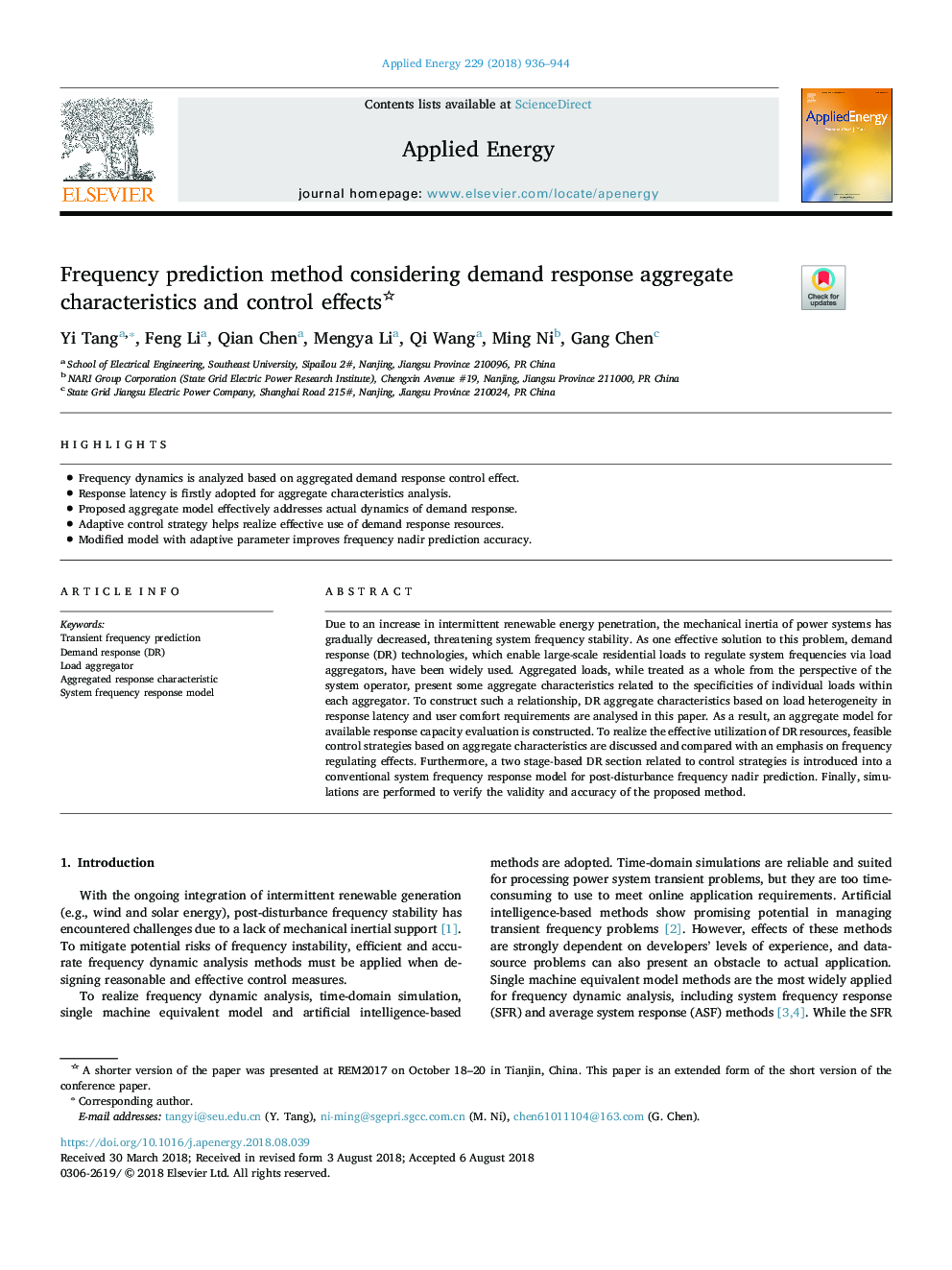| Article ID | Journal | Published Year | Pages | File Type |
|---|---|---|---|---|
| 11000856 | Applied Energy | 2018 | 9 Pages |
Abstract
Due to an increase in intermittent renewable energy penetration, the mechanical inertia of power systems has gradually decreased, threatening system frequency stability. As one effective solution to this problem, demand response (DR) technologies, which enable large-scale residential loads to regulate system frequencies via load aggregators, have been widely used. Aggregated loads, while treated as a whole from the perspective of the system operator, present some aggregate characteristics related to the specificities of individual loads within each aggregator. To construct such a relationship, DR aggregate characteristics based on load heterogeneity in response latency and user comfort requirements are analysed in this paper. As a result, an aggregate model for available response capacity evaluation is constructed. To realize the effective utilization of DR resources, feasible control strategies based on aggregate characteristics are discussed and compared with an emphasis on frequency regulating effects. Furthermore, a two stage-based DR section related to control strategies is introduced into a conventional system frequency response model for post-disturbance frequency nadir prediction. Finally, simulations are performed to verify the validity and accuracy of the proposed method.
Keywords
Related Topics
Physical Sciences and Engineering
Energy
Energy Engineering and Power Technology
Authors
Yi Tang, Feng Li, Qian Chen, Mengya Li, Qi Wang, Ming Ni, Gang Chen,
